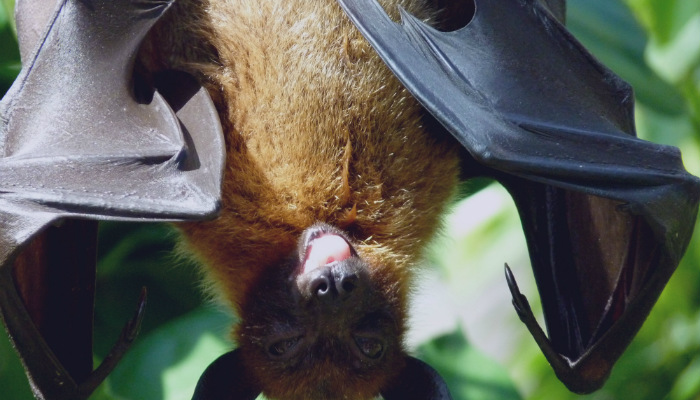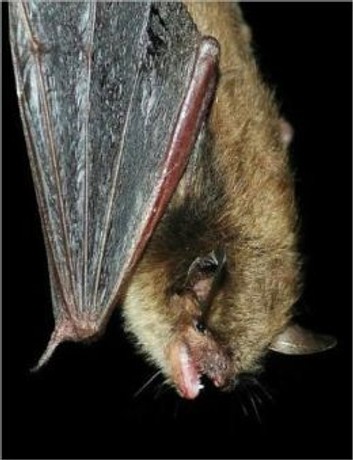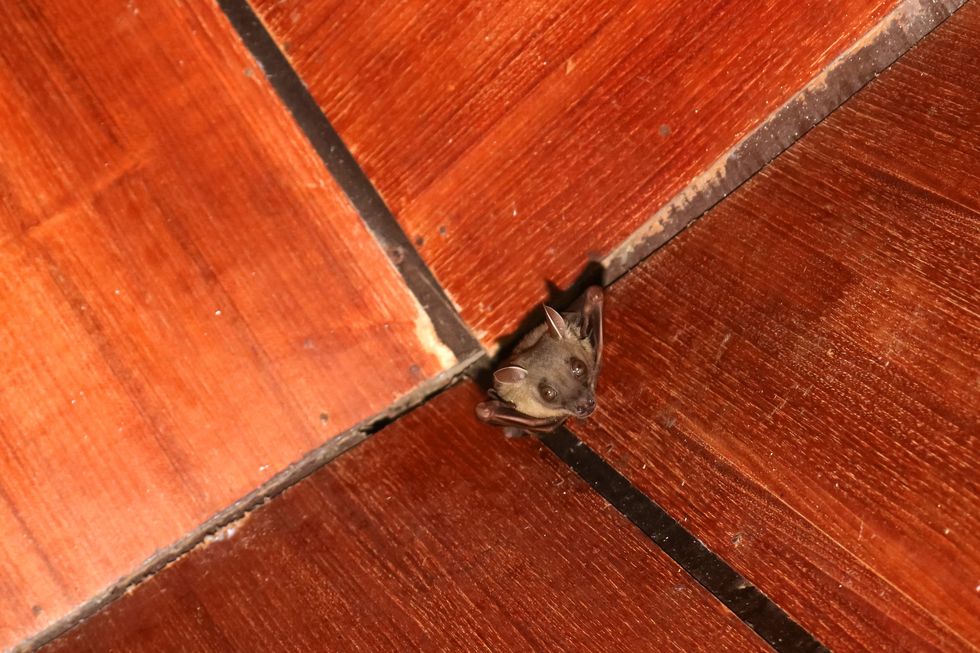How to Get Rid of Bats
Bats are mysterious and mythical mammals because they are the only ones in their genus that can fly. Anyone who has these winged creatures hanging around their property wants to know how to get rid of bats.
Some people are even scared of these mammals — but they’re not as dangerous as imagined. That said, it is still important to know how to get rid of bats from home or anywhere they are not welcome. The problem with bats is that they bite when provoked or threatened and carry the risk of transmitting rabies.
Bats are also noisy and may also soil wherever they stay. Nevertheless, these mammals are vital to the ecosystem because they feed on many pests including deadly mosquitoes. Bats can wreak havoc if they choose to nest in your attic or home. And in many places, there are laws preventing the killing (or even the forceful removal) of bats
Signs of Bats in Your House
Let’s get the scary part out of the way — There likely won’t be many signs you have bats. Do bats make noise? — Yes, but not any that you can hear. Their noises are at a higher octave than most humans here. There may be the occasional click, but it’s not loud.
So, you’re going to have to search for the any signs of bat activity in your home.
Check for:
Bats in Chimney: It’s easy for them to access, oftentimes warm and remains dark all day. This means chimneys are an ideal place for bats to…hang out.
Bats Under Eaves: Check for bats under the eaves of your home during the day, especially in parts where the sun doesn’t hit very well.
Bats in the Attic: Of course, the attic or upper crawlspace is a great hiding place for these winged invaders.
Outbuildings (Bats in Barns, or the Belfry): If you have a property with multiple buildings, you could find bats in your sheds, barns and detached garages — especially if you don’t frequent them.

How to Get Rid of Bats Forever – Complete Guide to Bat Control
Though there are over 1200 different species of bats in the world, there are only three major types that tend to inhabit the home. Bats are one of the most feared household pests, simply because of their appearance, although constant exposure to bat droppings have been proven to cause certain health related issues such as lung disease.
The major concern upon discovering a bat inside the home however, is normally linked to a number of myths that are often taken at face value by many people. People often believe that bats are associated with folklore and witchcraft, mainly because of their nocturnal lifestyle, and these myths have only caused much hysteria when a bat infestation in the home is discovered. The best way to get rid of bats on a long term basis is by understanding their habits and lifestyles. In the notes below, we delve into a deeper understanding of the way bats operate, and how to keep them out for good.
What are bats?
Like many other creatures including humans, bats are warm blooded mammals that contribute to the ecosystem of life. They are important to the environment as they aid in pollinating flowers and scattering seeds, thereby contributing to the wildlife of many tropical plants and herbs.They are the only mammals that have mastered flight, which can be attributed to their wide wings that contain similar bones to those present in the hand and arms of a human. Bats are generally divided into two major groups because of their size and characteristics, these are the megabats and the microbats. Though the difference mainly lies in size, the megabats are known for their generally peaceful existence, living by eating fruits, while the microbats appear a bit more sinister and are known for their echolocating capabilities.
Understanding megabats
Also commonly referred to as “fruit bats,” megabats are generally found in tropical countries and islands and are generally very large. There are a few that are the same size as microbats, standing at only 6 cm (2.4 in.), but the majority of megabats are very big, with the largest recorded bat weighing a shocking 3.5 pounds, with a wingspan of 5.6 feet. Megabats are generally herbivores that rely only on plants, and operate based on their sense of smell, instead of echolocation. These bats also have very large eyes, making it easier for them to align themselves inside caves, as well as during twilight.
Understanding microbats
Also dubbed as “true bats” because of their ability to communicate via echolocation, microbats are the more popular of the two, and can be found in many different countries worldwide. They are generally very small, with sizes varying from 4 to 16 cm (1.6 to 6.3 inches) and carry a variety of characteristics that make them different from their larger counterparts. Microbats are also known to be “vampire bats” as well, because some of their specie feeds on blood. Most microbats however have a diet of insects, sometimes frogs and even fish. While one of the major distinctions of microbats is their ability to echolocate, they also contain certain physical traits that makes them distinctly different. Examples of this include the difference in the size of the ear and eyes, as microbats tend to have larger ears than megabats, and smaller eyes. Ultimately, both microbats and megabats are crucial to the ecosystem of the world, but understanding them helps when getting rid of them.

How to Get Rid of Bats: Everything You Need to Know to Protect Your House
If you want to know how to get rid of bats in attic or near the house, you’ve come to the right place. Non-stop fighting with pests is not only my job, it has also been my hobby for many years. I receive numerous calls from clients who are desperate to get rid of bats but don’t know how to do that.
These flying mammals are dangerous neighbors, and once you notice their presence in your yard or under your roof, you have to take care of this problem immediately. Now, let’s discuss who they are and how to get rid of bats outside your house and inside it.
Detailed Guide on Bats
Nobody, except Batman probably, thinks that living in a house full of bats is cool. So, if this happens to you, there are several options to remove bats from attic, including DIY measures and calling the pest control service. The most dangerous thing about bats is that they can bite you and spread various health hazards through it.
Bats’ Characteristics
Bats are mammals, just like us. They belong to the Chiroptera class and are unique by their ability to fly, which makes them the only one representative of mammals who can do that. Not all bats are similar: there are over 900 types of them.
Bats have arms, which are long, and fingers. There are membranes that connect these fingers and wings with their legs. Usually, bats do not live in cold climates. They prefer to fly during the night and hide from sunlight somewhere in dark places, including attics and caves. So, you’re most likely to find bats in a barn. Bats are a valuable part of nature, and they are useful for humans as well.

A Quick and Easy Guide on How to Get Rid of Bats
Bats are flying mammals in the order Chiroptera (pronounced /kaɪˈrɒptərə/). The forelimbs of bats are webbed and developed as wings, making them the only mammals naturally capable of true and sustained flight. By contrast, other mammals said to fly, such as flying squirrels, gliding possums and colugos, glide rather than fly, and can only glide for short distances
Bats do not flap their entire forelimbs, as birds do, but instead flap their spread out digits, which are very long and covered with a thin membrane or patagium. Chiroptera comes from two Greek words, cheir (χείρ) “hand” and pteron (πτερόν) “wing.”
There are about 1,240 bat species worldwide, which represent about twenty percent of all classified mammal species. About seventy percent of bats are insectivores. Most of the rest are frugivores, or fruit eaters. A few species such as the Fish-eating Bat feed from animals other than insects, with the vampire bats being the only mammalian parasite species
Bats are present throughout most of the world and perform vital ecological roles such as pollinating flowers and dispersing fruit seeds. Many tropical plant species depend entirely on bats for the distribution of their seeds.
The smallest bat is the Kitti’s Hog-nosed Bat, measuring 29–34 mm (1.14–1.34 in) in length, 15 cm (5.91 in) across the wings and 2–2.6 g (0.07–0.09 oz) in mass. It is also arguably the smallest extant species of mammal, with the Etruscan shrew being the other contender.[citation needed] The largest species of bat is the Giant Golden-crowned Flying-fox, which is 336–343 mm (13.23–13.50 in) long, has a wingspan of 1.5 m (4 ft 11 in) and weighs approximately 1.1–1.2 kg (2–3 lb).
How to Get Rid of Bats and Save Your Sanity
It’s never a good feeling to have an unwanted critter under your roof. Looking for tips on how to get rid of snakes, how to get rid of house flies, or how to get rid of roaches can leave you feeling unsettled and with a serious case of the heebie-jeebies. There’s no mistaking that scratching sound coming from the attic that alerts you to an intruder, and it’s best to act quickly to get rid of the problem before it gets worse.
If you discover you’re sharing your home with bats, there are a few important things to keep in mind before getting them out of your house. Several species of bats are protected by the federal Endangered Species Act of 1973, which means it is unlawful to kill them. But that doesn’t mean you have to welcome them into your home! Also, bats are very valuable to the environment. They act as pollinators and seed spreaders and eat thousands of pesky bugs like mosquitoes in a single day, so we want to keep them around, but not under our roof. Bats can carry diseases like rabies, and their droppings, called guano, can cause respiratory problems for the home’s human inhabitants. So how do you get rid of bats without killing them?
Try a Bat Removal Device or Repellent
A bat excluder works great if you know where the bats are getting in. The cone- or tube-shaped device covers the hole and simply creates a one-way route for the bats to exit your home. When they leave at night, they won’t be able to get back in. Problem solved!
Of course, because bats can fit through tiny spaces, it’s not always easy to find out how they’re getting in. If that’s the case, try installing a bat alarm that emits a sound that’s unpleasant to bats and causes them to flee the area. Or try a product like Bat Magic. Bat Magic comes in tea bag-like scent packs and contains peppermint and spearmint oils.
Seal Up Any Holes
Once you’re sure the bats have left the building, it’s time to seal up any holes or cracks with caulk. Remember, bats can fit through holes as small as 1/2 inch, so you’ll have to be diligent to ensure your winged friends don’t return.